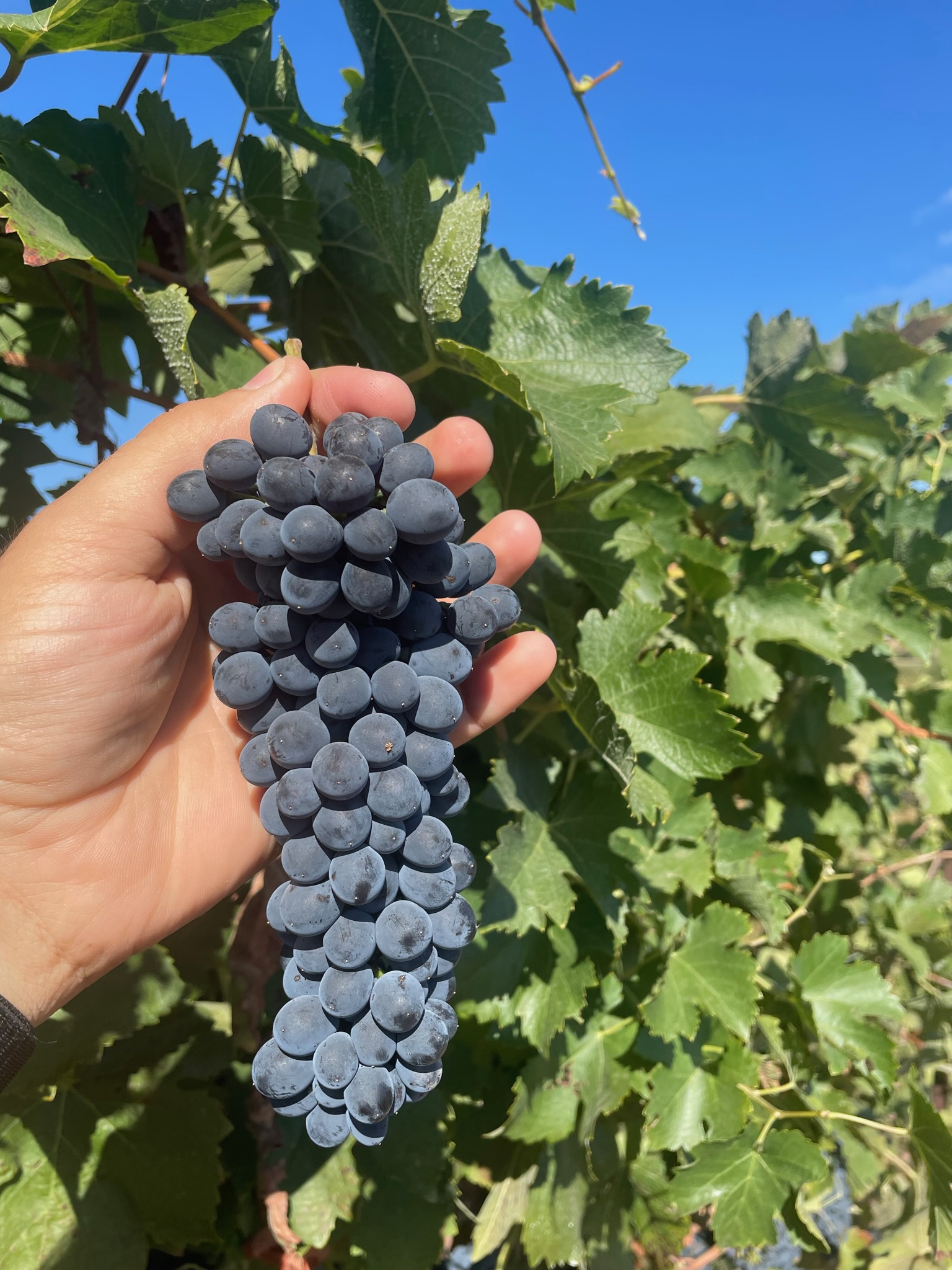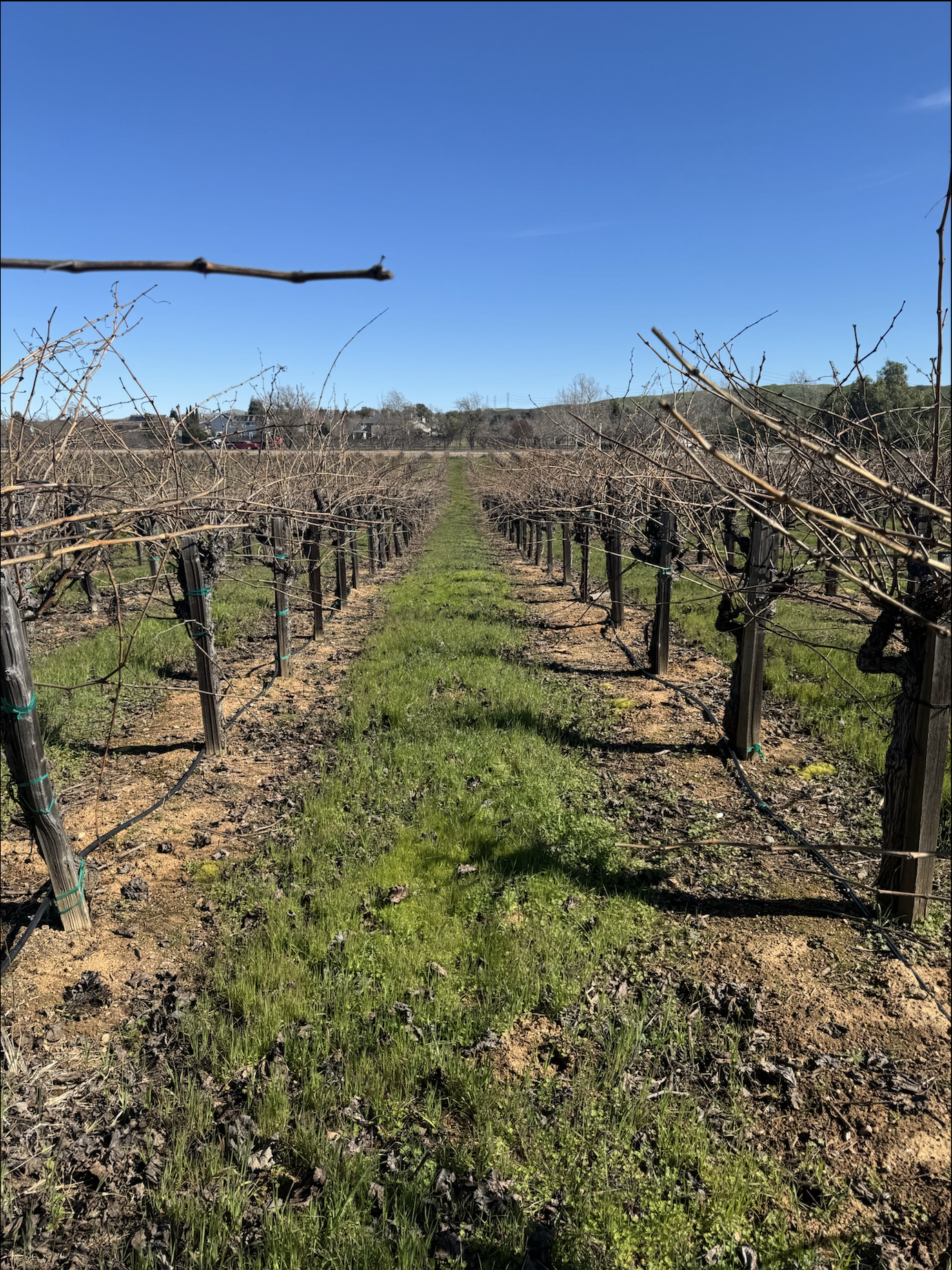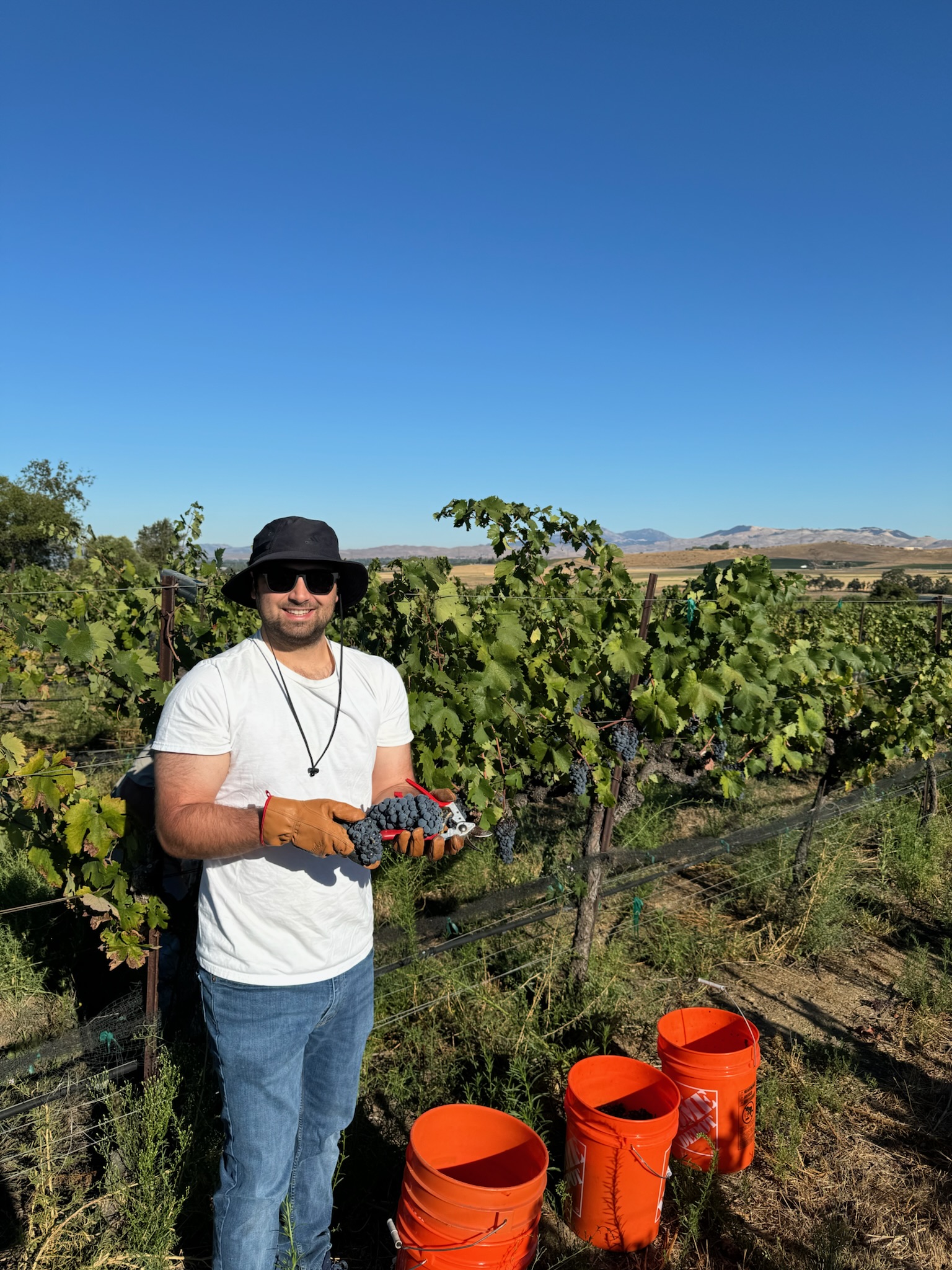Our Story
Where tradition meets innovation in the heart of Livermore Valley
Our Vineyards
Vine Farm Ridge
Perched 800 feet above sea level on the first ridge rising off of the valley floor, Vine Farm Ridge is a 14-acre vineyard framed by sweeping views of the Livermore Valley. The character of this vineyard begins in the earth itself—reddish, dusty soil, alluvial stones, north-facing slopes, and steady daily winds all coming together to create the ideal conditions for wines that are distinctive, vibrant, and a joy to drink.

Our First Wines
In 2023 our family began managing the Vine Farm Ridge property. Years of neglect had left VFR struggling—Chardonnay vines weakened by disease, and much of the Zinfandel and Petite Sirah vines were completely dead. Yet in that first vintage, Brad saw promise in a few of the healthy Petite Sirah vines that remained. He decided to make wine from them, hoping to discover whether the site's potential could still shine through.
As a family, we worked side by side, sorting through a tangle of dying vines to find healthy clusters. The effort yielded just half a ton of grapes—barely enough for a single barrel. But inside that barrel we found the vineyard's true voice: bright acidity, vivid fruit, and a depth that convinced us to give Zinfandel and Petite Sirah another chance.
In 2024 Brad took full responsibility for farming—pruning, managing the canopy, controlling weeds, and carefully tending each surviving vine. That year's vintage reaffirmed our belief in the site's strength. The Zinfandel and Petite Sirah were picked together, co-fermented in the classic California style, and produced just two barrels of wine—small in volume, but full of promise.
After two encouraging vintages, we made a bold decision: to start fresh, replanting the entire vineyard with healthy vines and thoughtfully chosen varieties to fully unlock the potential of Vine Farm Ridge.
The Future of VFR
Going forward the property will be planted utilizing two families of grapes… The first is the California heritage grape varietals: Zinfandel, Petite Sirah, Carignane, Martaro, Trousseau Gris (Grey Riesling). The second is the Mediterranean varietals: Grenache, Syrah, Mourvèdre, Cinsault, Grenache blanc, Picpoul blanc, Vermentino, Muscat blanc, and Bourboulenc.
With these two themes in mind it seemed like a no brainer to plant in the traditional style of both California and the Mediterranean by head training the vines without using wires to support the foliage and the field blend small amounts of different, but complementary varietals into each block.

Blind Boss Vineyard
Blind Boss Vineyard is a three-acre vineyard planted in front of the Ravenswood historic site. When the decision was made to replant Vine Farm Ridge we knew that meant we would need to find another vineyard from which to source our fruit.
Luckily, the Blind Boss vineyard became available and we are able to fully take over the management of the property. We saw this as a stroke of luck as it was planted to three varietals we know thrive in the warm days and cool nights of the Livermore Valley: Zinfandel, Grenache and Mourvèdre.
The vines were also grown in the traditional head trained style of the classic California vineyards which provides shade for the fruit during hot summer days.
The History of Blind Boss
The history of this property goes back to the 1880s when it served as the country home and winemaking facility known as "Ravenswood" for Christopher A Buckley Sr. Despite being completely blind and an Irish immigrant he became known as the "Blind Boss" and rose to power in San Francisco and beyond in both politics and industry.
The Blind Boss had a villainous reputation as a crooked political man accused of corruption, bribery, and embezzlement. The 100-acre Ravenswood estate was often used by Buckley to entertain guests and host social events, including demonstrations of "Ephraim" their famous boxing donkey.
By the 1890s Buckley was shipping railcar loads of wine and brandy grown and produced on site from the Livermore rail depot. There were twelve grape varieties grown on the property, visionary idea at a time where typically growers would plant a single variety. Zinfandel, Folle Planche and Muscadelle du Bordelais were among the main grapes used in wine and brandy production.
Today the 1891 Main House and the 1885 Cottage and tank house have been restored, but all that remains of the winery and distillery are the ruined concrete walls and a depression in the earth where the cellar once stood.
The Faces Behind the Vines
Brad Kurtz
Brad grew up in the East Bay where he spent much of his childhood camping, hunting, and playing outdoors. It was this love for the outdoors that drove him to Cal Poly after graduating high school to study Environmental Soil Science.
After his sophomore year at Cal Poly Brad took a summer job laboring in several of the most prestigious vineyards in Napa Valley. This experience opened up the world of wine and viticulture to him as he started to consume as much knowledge as possible on the subject.
After a couple additional summer internships, he landed a job as a viticulturist for the Wente Family in Livermore. It was here where he was exposed to growing dozens of grape varietals across a complex network of soils and microclimates. He built up experience utilizing cutting edge viticulture techniques and learned under some of the most experienced vineyardists in California.
After 5 vintages with Wente, Brad made the decision to take on the role of vineyard director at Gloria Ferrer in the Sonoma Carneros region where he grows Pinot noir and Chardonnay for the production of world class sparkling wines.
It was at Gloria Ferrer where Brad developed a deeper understanding of winemaking and the connection between viticultural practices and their effects on the wines. Brad also led the transition of Gloria Ferrer's 335 acres of estate vineyards to full CCOF organic certification as well as being awarded the California Green Medal for sustainability in 2024.
Brad has always felt a strong connection to the Livermore Valley and felt as if he was not finished growing grapes and producing wine there. In 2023 with the support of Ally, Don, and Pat he harvested and produced the first vintage of VFR wine. VFR gives Brad the opportunity to explore growing grapes and producing the wines that he is passionate about and believes that can rival the best in California. He remains a lifelong student of viticulture, winemaking, and California wine history hoping to continually improve his craft.


Ally Kurtz
Ally grew up in the East Bay in a household that was no stranger to wine. Her parents have always had a passion for collecting fine California wines and sharing them with friends and family along with a cigar or two. It was this enthusiasm for wine that rubbed off on Ally from an early age. When it was time for her to go off to college she made the choice to attend Cal Poly and study Viticulture and Enology with a focus in Wine Business.
During summers Ally took a job at Ruby Hill Winery in the Livermore Valley working in wine hospitality and sales. She spent many hours in the tasting room learning the business and customer facing side of the wine business. After graduation, she continued working weekends in the tasting room keeping her wine knowledge sharp even after accepting a role in her family's business in the tech industry.
Today, Ally fulfills a wide range of responsibilities. From assisting Brad in the vineyard to representing our wines within the community, her dedication ensures our small business continues running smoothly.
Friends and Family

Austin Kurtz
Chief Technology Officer at VFR
We are supported every day by an army of friends and family that support us in everything from showing up to help pick grapes to helping to get the word out about our wines. For that we are forever grateful to our support network.